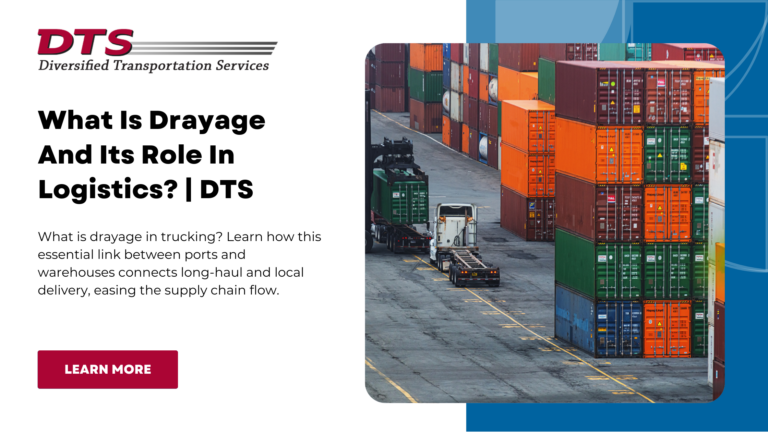
Long-haul shipping typically sees goods traveling from one centralized location to another. This requires additional logistics to carry them to and from the shipping hubs.
This article will look at what drayage is and why it is important.
Drayage in trucking is a type of freight shipping that bridges the gap between long-haul shipping and local delivery. It’s typically used to transport goods over short distances from a port to a warehouse or distribution center within one geographic area. Drayage is considered a form of “intermodal” shipping that connects different modes of shipping over short distances. This helps smooth out the process of getting goods from A to B over long distances.
An example would be when a container with cargo comes into a port via ocean freight. That container needs to travel from the port to a warehouse or distribution center so individual shipments can be sent out to their final destinations. The transfer of the container from the port to the warehouse.
If your shipment is coming from a warehouse in one country to your warehouse in another, you’ll likely need drayage services twice. One from the originating warehouse to the freight shipping center and one from the receiving freight center to your warehouse.
It is the first and last step in long-haul freight, making crucial trips between warehouses and ports to ensure goods get to where they need to be. It plays a pivotal role in the supply chain by offering the following benefits:
There are five main types of drayage services commonly used by B2B companies.
Pier drayage, also known as port drayage, involves moving cargo from a port or pier to a nearby warehouse, distribution center, or other local destination. This service typically covers the first part of inland transportation after goods arrive by ship.
This involves transporting goods between different carriers, such as moving cargo from a rail yard to a trucking company’s terminal. This helps facilitate the transition from one mode of transportation to another, often over short distances.
This involves moving cargo between locations owned by the same carrier, such as moving containers within a rail yard or between two facilities operated by the same logistics provider. It helps improve internal logistics without involving external parties.
Expedited drayage services focus on fast and time-sensitive delivery, often involving dedicated resources to ensure prompt transportation of goods. It’s typically used for urgent shipments, reducing wait times at ports or warehouses.
This is used to move containers temporarily when there’s not enough space at a terminal or facility. Containers may be relocated to a nearby storage area and then shuttled back when space or handling resources are available.
While it seems like a simple concept, it’s an additional layer that can add complexity and confusion to the shipping process.
That’s why it’s often a good idea to partner with an experienced third-party logistics provider to help you better understand and manage drayage.
DTS is run by logistics professionals with over 30 years of experience. We can help you navigate the tricky world of logistics, including drayage, with ease.
Whether you're a company looking to improve one facet of your supply chain, your entire supply chain, or simply looking for a transportation and logistics consultation, we can help.